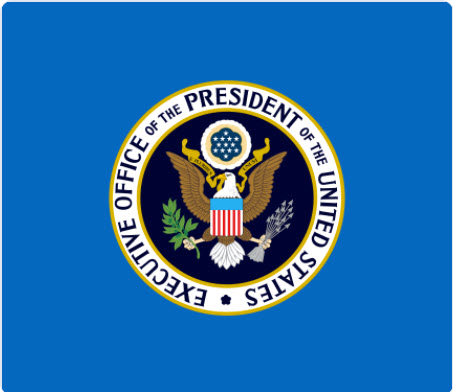The semiconductor industry drew the world’s attention last week as shipments were forecast to be up 20% Y/Y in Q121, while demand grew 30% faster than supply in 2020. The gap is causing shortages in a range of industries, most notably automobiles.

![]() Semiconductor supply v demand – The SIA points out that it can take nine months or more to ramp up semiconductor production.
Semiconductor supply v demand – The SIA points out that it can take nine months or more to ramp up semiconductor production.
President Biden then issued an Executive Order to study the semiconductor supply chain, while ignoring the long term threat posed by the Chinese who are aggressively subsidizing the development of the technology. Meanwhile, a bill to support the US semiconductor industry languishes in the US Congress with billions for Congressional pet projects, that do nothing for Covid-19 relief or the economy, are packed into the $1.9 trillion stimulus bill.
The impact to date in the display industry has been minor as key end products such as smartphones, notebooks and TVs have supply chains that are less reliant on foundries where the shortages lie. But drivers ICs may be the next shortage to take effect, since most of the design houses are fabless except for Samsung, which has a 50% share of the display driver market.
 Eric Schmidt at the 37th G8 Summit in Deauville. Image Guillaume Paumier, CC-BY.Eric Schmidt, former Google CEO, is often the smartest guy in the room when it comes to high tech and has the credentials to prove it. He said,
Eric Schmidt at the 37th G8 Summit in Deauville. Image Guillaume Paumier, CC-BY.Eric Schmidt, former Google CEO, is often the smartest guy in the room when it comes to high tech and has the credentials to prove it. He said,
“The US is ‘one or two years ahead of China in AI, not five or 10’ and the Chinese are well ahead in areas like face recognition.”
Schmidt called on the US government to fast track the development of emerging technology including artificial intelligence (AI) to maintain its lead on key technological areas. He addressed the Senate Armed Services Committee on emerging technologies and their impact on national security.
“Because of the diffusion of the technology, you have to expect that anything that’s invented in the open source AI world will immediately be adopted by China,”
said Schmidt, who is also the chairman of the National Security Commission on Artificial Intelligence, established in 2018 through the John S. McCain National Defense Authorization Act.
“The threat is very, very real.”
Legislation on the Shelf
Legislation that Senate Majority Leader Schumer proposed last year in May seeking funding of $100 billion to spur research in key tech areas, from artificial intelligence to quantum computing and semiconductors, sits on the shelf.
But as part of the new realization that we may be losing the race, senators are looking at providing emergency funding to implement bipartisan semiconductor programmes included in last year’s National Defense Authorization Act, which sets overall US military spending and the Pentagon policies backed up by that spending.
China Wants to be an AI Superpower
The swift advances in Chinese artificial intelligence are partly due to the country’s supportive policy including its “Next Generation Artificial Intelligence Development Plan” introduced in 2017. It is designed to make China an AI superpower by 2030, surpassing its rivals to become “the world’s premier artificial intelligence innovation center”. The country’s massive population and weak data privacy laws also allowed China easy deployment of such technology. The gap in defense capabilities between China and the US is quickly narrowing causing Schmidt to stress that “urgency” should drive the US policy, regardless whether the focus is on the public funding or private-sector initiatives.
Other Critical Technologies
AI is just one of many areas that US government has identified as crucial in shaping future national security. In 2018, America’s national defense strategy identified 14 categories of emerging technologies as critical, including AI, semiconductors, quantum computing, biotechnology, hypersonics, and 5G.
By the end of 2020, the Commerce Department expanded that list to 37 categories. Products that fall under these groups are under restriction as exports to China.
“But it’s not enough,” said Schmidt. “I suggest we take American ingenuity, which is profound, with some form of incentive system to close this gap and put those semiconductor foundries in the United States and use them for both commercial but also military purposes.”
One great example of the governments priority given to this problem is the upcoming Stimulus Bill. It has a $2.0 trillion target and covers a myriad of spending, but not one dollar for high tech. Schumer’s delayed $100 billion to spur research in key tech areas, would barely be a footnote in this bill.
Biden is Reviewing Chip Supply
 President Biden signed an executive order addressing the global semiconductor chip shortage that has forced U.S. automakers and other manufacturers to cut production and alarmed the White House and members of Congress, administration officials said. Biden’s executive order, will launch an immediate 100-day review of supply chains for four critical products: semiconductor chips, large-capacity batteries for electric vehicles, rare earth minerals and pharmaceuticals
President Biden signed an executive order addressing the global semiconductor chip shortage that has forced U.S. automakers and other manufacturers to cut production and alarmed the White House and members of Congress, administration officials said. Biden’s executive order, will launch an immediate 100-day review of supply chains for four critical products: semiconductor chips, large-capacity batteries for electric vehicles, rare earth minerals and pharmaceuticals
A group of U.S. semiconductor companies earlier in February urged Biden to provide “substantial funding for incentives for semiconductor manufacturing” as part of his economic recovery and infrastructure plans. Under Biden’s order, the White House will look to:
- Diversify the United States’ supply chain dependence for specific products such as rare earth minerals from China.
- Develop some of that production in the United States and partner with other countries in Asia and Latin America when it cannot produce such products at home, the official said.
- Limit imports of certain materials and train U.S. workers to ramp up production at home.
The Executive order provides a glimmer of hope that the US could begin addressing the longer term issues identified by Eric Schmiidt. (BY)
Barry Young is the CEO of the OLED Association.

